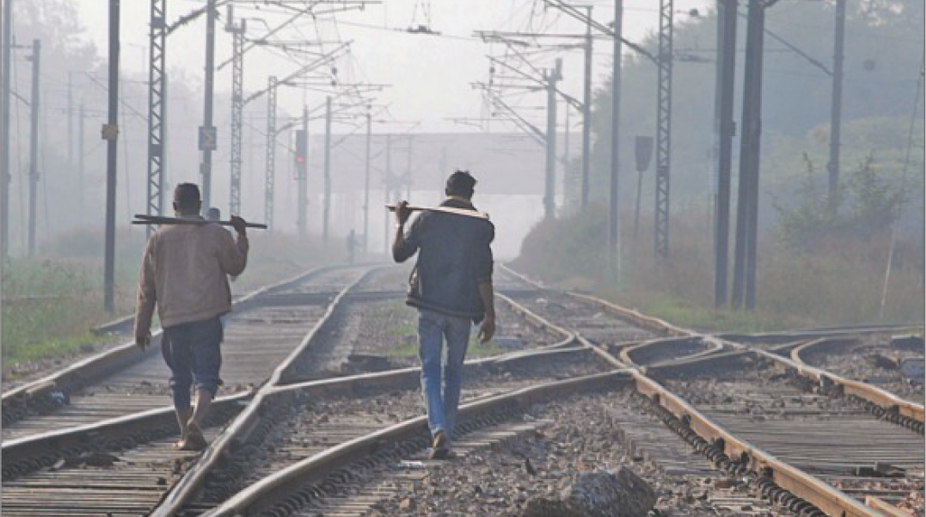Centre calls an all-party meet today, ahead of Budget Session
Ahead of the Budget Session of Parliament, the Centre has called an all-party meeting on Thursday.

Representational Image (Photo: Subrata Dutta/SNS)
The cameras roll when a flower-bedecked locomotive hauls a new train out of a station after it is flagged off by a VIP, at times even the opening of a pedestrian over-bridge is turned into a media-event ~ particularly after a mishap on an older bridge near the same spot. The link between publicity and popularity ~ which has political implications ~ can never be overlooked. Alas, track maintenance affords no photo-opportunity and is consequently relegated to the lowest rung of the priority scale, and hardly figures in the “railway debates” in Parliament.
So it is unlikely that a scathing report of the Comptroller & Auditor General on the sustained neglect of the “permanent way” will shake Rail Bhawan out of its slumber. Ministers and members of the Railway Board come and go, track conditions show little improvement: even if that costs the lives of paying passengers. A CAG report recently presented to the apex legislature contains enough material to force adjournments aplenty, but is drowned by demands to probe scams, grant special status to particular states etc.
Advertisement
It noted that between 2014 and 2017 no fewer than 16 accidents/derailments were caused by inept track management across five railway zones, and loss-creating speed restrictions had been imposed on as many as 294 sections ~ on a permanent basis~ because of deficient track-quality. Remember, all this when talk of a bullet train shoots down a basic requirement.
Advertisement
The audit of 37 select sections “showed that track maintenance activities need to be strengthened and undertaken following laid down instructions and guidelines… inspections were not being done as per laid down frequency”, the report informed the Honourable members ~ few of whom bother to peruse the wealth of information furnished in their daily supply of parliamentary papers. No wonder that Piyush Goyal and a string of his predecessors have got away with something little short of murder.
And that was just the tip of the proverbial iceberg: the report highlighted the lack of communication equipment with the “gangs” patrolling the track, limited use of more technologically-advanced systems to detect track failures, no attention being paid to the quality of track-stabilising ballast, a shortage or diversion of staff from remote to city areas…etc. There is urgent need to reorient railway priorities and put passenger-safety at the top of the tree. Maybe scaling down the political value of the ministry would result in a more professional approach.
Merging the railway and general budgets has only diluted the attention demanded by a system that is used by the masses and has become so integral to their lives. Or maybe instead of seeking to divest in Air India there should be moves towards roping-in the Adanis, Ambanis, Tatas etc to running the railways. It could well be argued that the passengers got a better deal in the days of the GIP, BB&CI, and MSM railways….
Advertisement